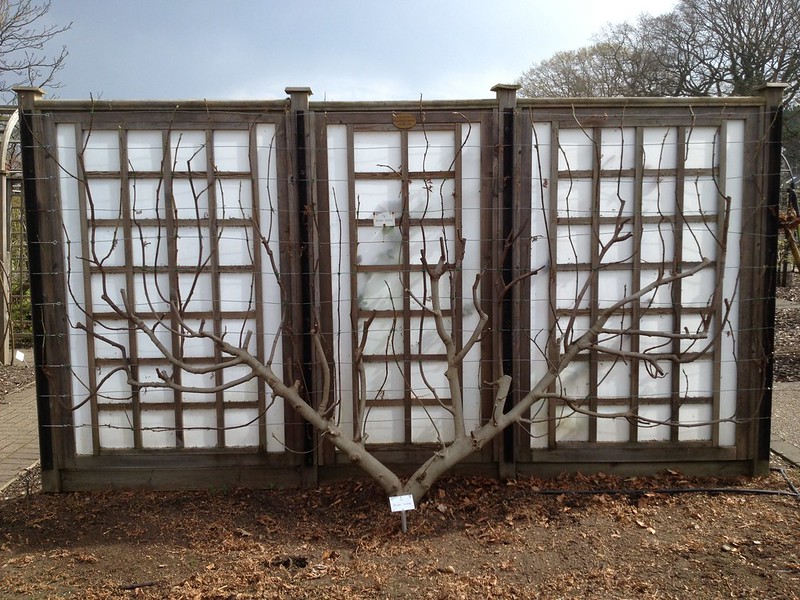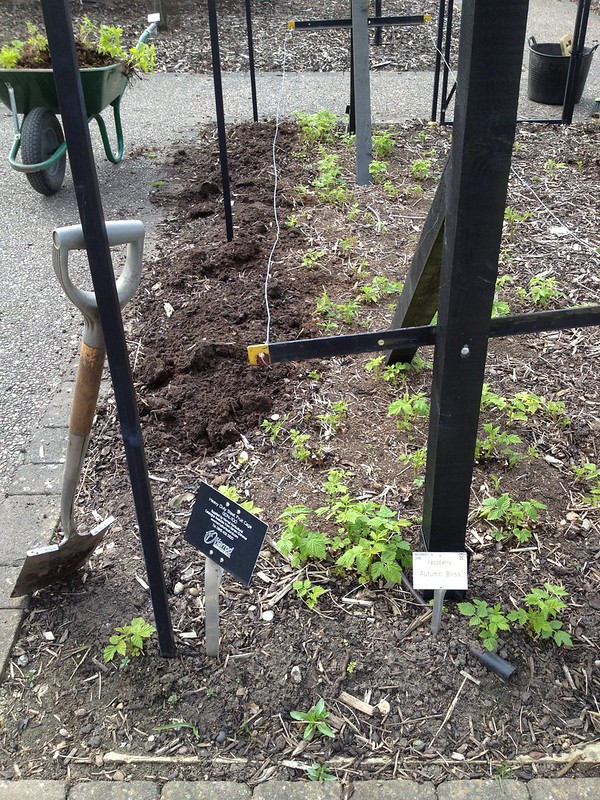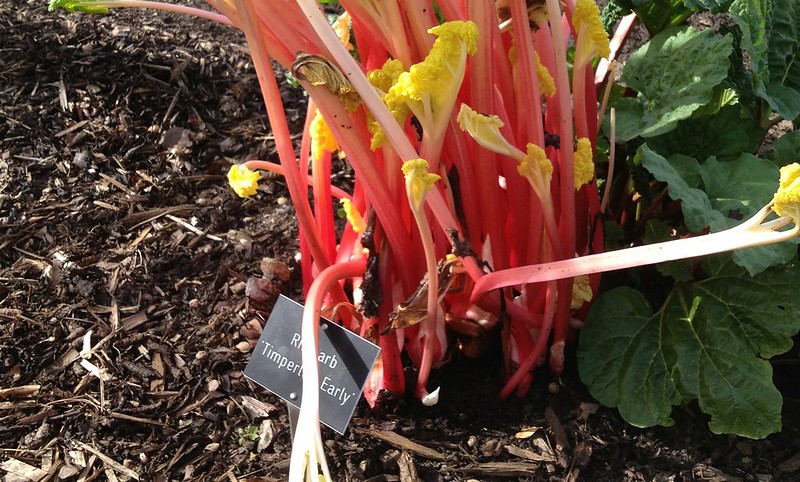- pot up, in clay pot, a new pear tree (find pot and compost)
- water the trees pots and the strawberries in the polytunnel
- take the bracken off the fig
- dig out two dead gooseberries
- shop for strawberries and a new gooseberry in the garden centre (to prop reception)
- hand-pollinate the peach
- remove all the raspberry suckers beyond the rasperries' allotted space
- fertilise the raspberries and blackcurrant (35 g/sqm or both sulphate of ammonia and of potash)
- weed to my heart's content
- pick the forced rhubarb
After we dressed the fig ('Brown Turkey') at the end of November, it was good to have the opportunity to take it out of its winter shelter, weed around it, and leave it in all its beauty for the visitors to see. I also found a frog in the process, hiding in the bracken at the feet of the tree.
 |
| Fig: before |
 |
| Fig: after |
 |
| Hand pollinating peach flowers |
Armed with a rabbit's tail on a stick (the source of some bemusement, even amusement, in passing visitors), I removed the frames and proceeded transferring pollen from one flower to the other.
The procedure has to take place on a warm, sunny day, and it was done before today: in fact, the flowers were mostly at petal fall stage, but we wanted to be sure that we got all the flower we possibly could. It is a laborious task!
The frames then went back on: they'll stay until May.
 |
| Taking back the raspberries |
I did finish the day digging out those pesky raspberry suckers, running away from supporting poles and wires. There is some left for me next week, but I could not go home before picking the forced rhubarb, as it is supposed to go into a cheesecake for the team, that I'm baking at the weekend!
This was another first for me: I have never forced rhubarb, mainly because those terracotta pots they use are rather gorgeous to look at, but awfully expensive.
So I removed the lid (it had been pushed up by the long stems!) and then the pot with some excitement: forced rhubarb is considered such a delicacy.
 |
| Forced rhubarb |
The stems were beautiful, but very delicate - as you would expect of etiolated plants. When you tried to pull them away at the base, they either broke or ripped away the whole of the bud, which was really slimy and soft, as if on the point of rotting.
Some of the leaves were also starting to rot at the top: the enclosed environment is not ideal, you should not leave anything too long in such conditions.
Depending on the variety and the situation, in fact, forcing takes 5 to 10 weeks. This pot had probably been on just too long - but nothing that will spoil our enjoyment of the cheesecake!
By the way, I was told a plastic pot, surrounded by straw to keep the temperature more even inside would do just fine, although I suppose it would put it at bigger risk of rotting, because plastic is less porous than clay, so keep a closer eye if you do try.

No comments:
Post a Comment